HTC 10: Don’t Call It a Comeback
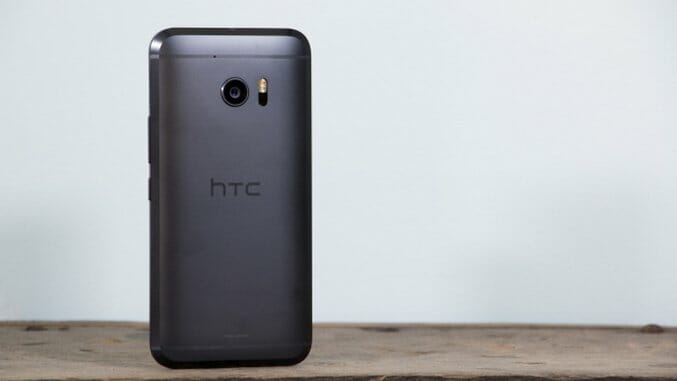
When I hold the HTC 10, I don’t think about it’s aluminum unibody construction, dramatically chamfered edges or gorgeous Quad-HD screen. I don’t ponder the phone’s size, capabilities of its camera or if it will last me a full day on a single charge.
I wonder if it’s too little, too late.
Lots of ink, traditional and digital, has been spilled in recent years about the downfall of HTC, once a growing giant in the young smartphone market. Many have foretold a world in which the Taiwanese company does not exist, many of the same people predicting that world may come sooner than we think.
To its credit, HTC has worked hard to carve out space beyond the smartphone market where it can find success. Its VR headset, Vive, came as a bit of a surprise, and shocked even more when it delivered not only a true competitor to the Oculus Rift, but a package that is, in many ways, better. It’s likely the company will continue to look for new paths that lead away from smartphones and to areas where it can be a leader rather than a distant follower.
For now, HTC is very much a smartphone company, and its latest device is a definitive statement that the company still has skin in the game.
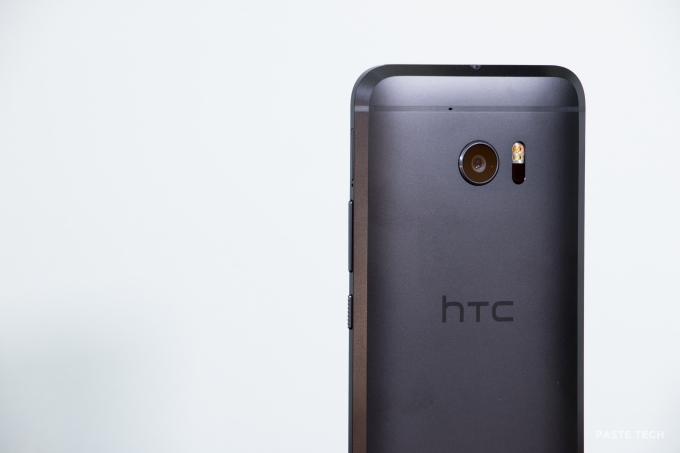 As with all great HTC devices, the 10’s story begins with its tremendous hardware. The design is nothing revolutionary, but the entire package is phenomenally constructed. The company says it spent the last 12 months obsessing over every detail of this phone, and the rock solid build is proof of that. Like many HTC phones of the past, the 10 feels fantastic in the hand, with enough heft to give a sense of durability, while remaining light enough to be comfortable for extended use.
As with all great HTC devices, the 10’s story begins with its tremendous hardware. The design is nothing revolutionary, but the entire package is phenomenally constructed. The company says it spent the last 12 months obsessing over every detail of this phone, and the rock solid build is proof of that. Like many HTC phones of the past, the 10 feels fantastic in the hand, with enough heft to give a sense of durability, while remaining light enough to be comfortable for extended use.
In the looks department, the 10 doesn’t inspire awe the same way a device like the Galaxy S7 Edge does, or even polarizing reaction like that which surrounded the Nexus 6P, but there is no doubt this is a beautiful machine. Some have knocked it for an uninspired design, one that harkens too closely to past devices. This is not a new complaint. HTC has been hammered before for delivering designs that are too iterative. There is no denying the 10 shares a deep visual history with many of HTC’s flagship designs, but it feels different than the near identical looks of the M8 and M9. In many ways, the 10 feels like HTC pressing reset and trying to capture some of the magic it conjured with the original One. In that sense, it’s understandable for the 10 to reflect much of the 2013 device’s style.
 The big design embellishment this year are the pronounced chamfered edges, which strikingly frame the back of the device and catch light in interesting ways. There is a part of me that’s curious what an HTC device would look like if the company stepped out onto a ledge, but then I’m reminded the last time the company did that was the One A9, which shared aesthetics with another incredibly popular smartphone. Sticking to your style is commendable, and I’d rather see HTC deliver devices that are similar to one another, thus refined and elegant, than stray too far into weirdness trying to make a splash.
The big design embellishment this year are the pronounced chamfered edges, which strikingly frame the back of the device and catch light in interesting ways. There is a part of me that’s curious what an HTC device would look like if the company stepped out onto a ledge, but then I’m reminded the last time the company did that was the One A9, which shared aesthetics with another incredibly popular smartphone. Sticking to your style is commendable, and I’d rather see HTC deliver devices that are similar to one another, thus refined and elegant, than stray too far into weirdness trying to make a splash.
The back of the phone is curved which helps it cradle in your hand comfortably. HTC has also reduced the overall footprint on the 5.2-inch flagship by slimming bezel sizes and removing the signature BoomSound speakers. The phone still features a dual speaker setup, but one has been relegated to the underside of the bottom chin. This means that it’s easier to cover when in landscape, but as long as the speakers remain unobstructed the sound is excellent. It still doesn’t compare to a Bluetooth speaker, but it’s far better than what most OEMs are placing in top-of-the-line products.
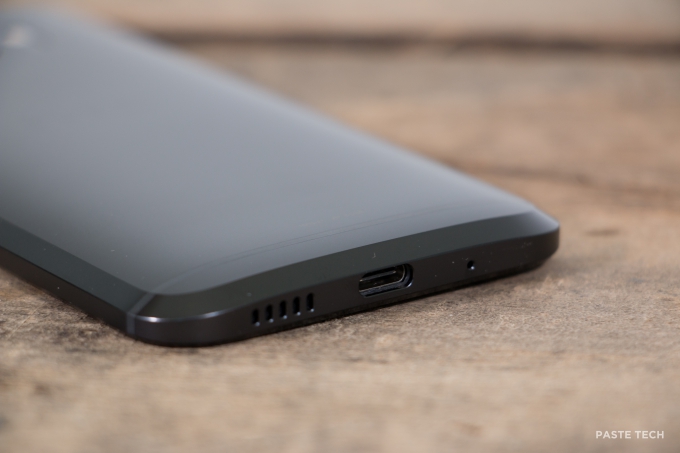 The speakers were also removed to make room for the new fingerprint scanner, which makes its first appearance on an HTC flagship. It’s exceptionally quick and accurate, rivaling the Nexus 6P’s, though I still prefer the latter’s circular shape and rear location. HTC has reason for placing its on the front; the scanner pulls double duty as a capacitive home button.
The speakers were also removed to make room for the new fingerprint scanner, which makes its first appearance on an HTC flagship. It’s exceptionally quick and accurate, rivaling the Nexus 6P’s, though I still prefer the latter’s circular shape and rear location. HTC has reason for placing its on the front; the scanner pulls double duty as a capacitive home button.
Flanking the fingerprint scanner/home button are the multitasking and back buttons. The setup is fine, but does feature one small nitpick. The buttons are not vertically centered on the lower chin, meaning they don’t fall in the natural place where my fingers expect them to be, leading to a handful of mispresses. This is easily remedied, however, by setting the capacitive buttons to always be backlit when the screen is on.
-

-

-

-

-

-

-

-

-

-

-

-

-

-

-

-

-

-

-

-

-

-

-

-

-

-

-

-

-

-

-

-

-

-

-

-

-

-

-

-

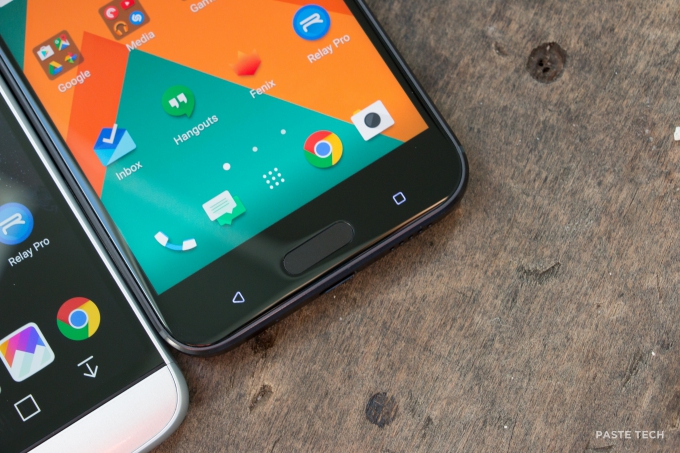 That small annoyance is one of very few grievances I have with the hardware. The phone has antenna lines, but nearly all metal phones do and HTC always does a great job incorporating them into the design. There is a camera bump, but there is always a camera bump. The enormous front-facing camera is comical, giving the leading portion of the handset a goofy look, but the quality you get in return more than makes up the difference. The 10 is quick to gather gunk and fingerprints, particularly in the carbon grey color our review unit came in, but everyone will just throw a case on it anyway. The headphone jack is located on the top of the device, but much larger phones have done the same.
That small annoyance is one of very few grievances I have with the hardware. The phone has antenna lines, but nearly all metal phones do and HTC always does a great job incorporating them into the design. There is a camera bump, but there is always a camera bump. The enormous front-facing camera is comical, giving the leading portion of the handset a goofy look, but the quality you get in return more than makes up the difference. The 10 is quick to gather gunk and fingerprints, particularly in the carbon grey color our review unit came in, but everyone will just throw a case on it anyway. The headphone jack is located on the top of the device, but much larger phones have done the same.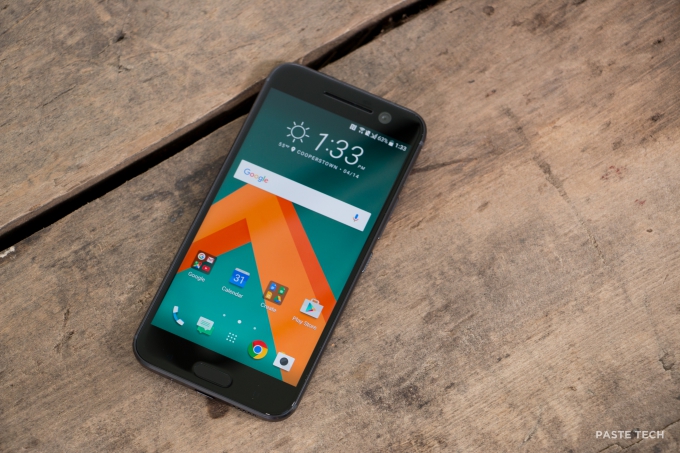 The software at work on the HTC 10 sparks almost no reaction. It’s still the company’s custom Sense skin, but it has been pared down so much that little individuality remains. Much of that is a good thing. Sense looks more like stock Android than ever and the company even worked with Google this time around to reduce the number of duplicative apps. That’s great. But, beyond a funky theme ability, BlinkFeed, custom audio software and the new Boost+ app, there is little here that gives Sense any kind of attraction. This begs the question: why not ditch the skin and run stock Android?
The software at work on the HTC 10 sparks almost no reaction. It’s still the company’s custom Sense skin, but it has been pared down so much that little individuality remains. Much of that is a good thing. Sense looks more like stock Android than ever and the company even worked with Google this time around to reduce the number of duplicative apps. That’s great. But, beyond a funky theme ability, BlinkFeed, custom audio software and the new Boost+ app, there is little here that gives Sense any kind of attraction. This begs the question: why not ditch the skin and run stock Android?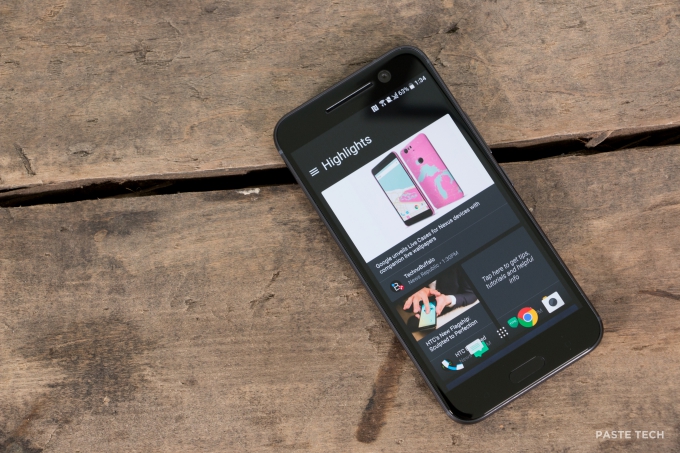 Boasting the new Snapdragon 820 and a truckload of RAM (4GB to be specific), the 10 absolutely screams. Apps launch and load almost instantaneously, multitasking is a breeze and gaming is smooth with no dropped frames. The 10 will take whatever you throw at it on a daily basis and scoff at the ease with which it can handle all tasks. The only issue I’ve had is that, occasionally, when using heavier apps, like Marvel Contest of Champions for example, the device has a tendency to run hot. It never got to the point where it physically hurt to hold the phone, but it was certainly noticeable.
Boasting the new Snapdragon 820 and a truckload of RAM (4GB to be specific), the 10 absolutely screams. Apps launch and load almost instantaneously, multitasking is a breeze and gaming is smooth with no dropped frames. The 10 will take whatever you throw at it on a daily basis and scoff at the ease with which it can handle all tasks. The only issue I’ve had is that, occasionally, when using heavier apps, like Marvel Contest of Champions for example, the device has a tendency to run hot. It never got to the point where it physically hurt to hold the phone, but it was certainly noticeable.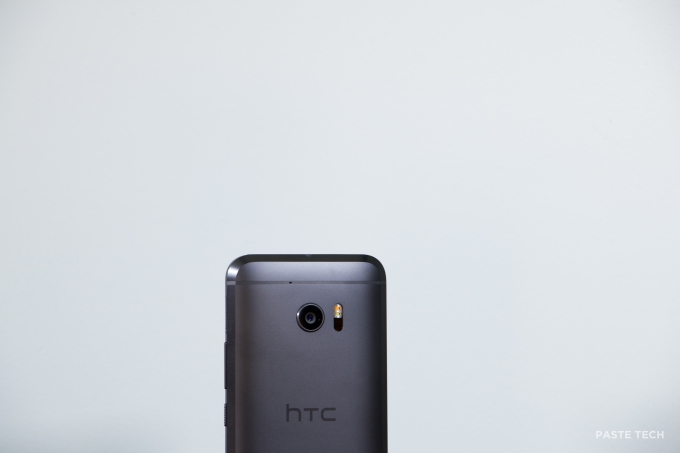 The short of it is, yes, the HTC 10’s camera is good. It’s the best camera HTC has put in a phone. It can compete with other high end phones on the market but it doesn’t surpass the best of the best, falling short of the bar set by the iPhone 6S Plus, LG G5 and Samsung Galaxy S7. The main camera is a 12MP, UltraPixel 2 shooter with an aperture of f/1.8, Optical Image Stabilization, laser autofocus and dual tone LED flash.
The short of it is, yes, the HTC 10’s camera is good. It’s the best camera HTC has put in a phone. It can compete with other high end phones on the market but it doesn’t surpass the best of the best, falling short of the bar set by the iPhone 6S Plus, LG G5 and Samsung Galaxy S7. The main camera is a 12MP, UltraPixel 2 shooter with an aperture of f/1.8, Optical Image Stabilization, laser autofocus and dual tone LED flash. Low light performance is interesting. The 10 does a good job of capturing the subject in low light, but it sacrifices accuracy to do so. I noticed that, when the camera is in auto, it prefers to push the ISO to high levels (1600, 2400 and 3200 with regularity) which adds light but significantly affects picture quality. The result are images that are far brighter than the actual scene with lots of noise.
Low light performance is interesting. The 10 does a good job of capturing the subject in low light, but it sacrifices accuracy to do so. I noticed that, when the camera is in auto, it prefers to push the ISO to high levels (1600, 2400 and 3200 with regularity) which adds light but significantly affects picture quality. The result are images that are far brighter than the actual scene with lots of noise.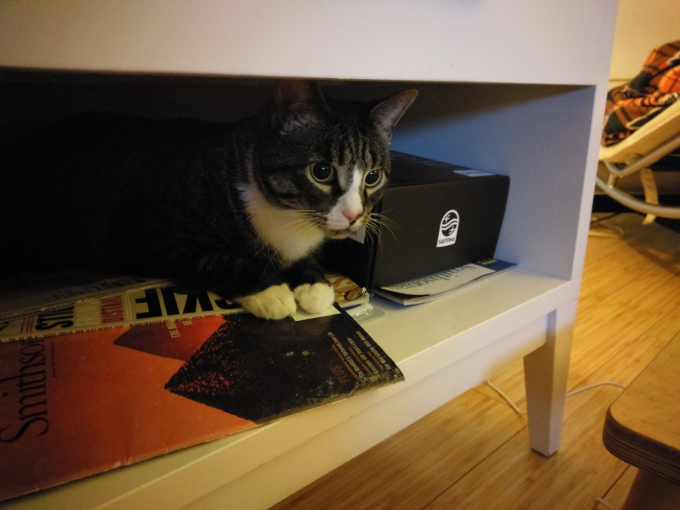 The camera app itself is well thought out and intuitive. It doesn’t launch as quickly as other camera apps I’ve used and can be slow to capture the image on occasion, though. The autofocus system is sometimes finicky, which is a huge let down when you want to snap a photo with speed, but there doesn’t seem to be any pattern to its performance woes.
The camera app itself is well thought out and intuitive. It doesn’t launch as quickly as other camera apps I’ve used and can be slow to capture the image on occasion, though. The autofocus system is sometimes finicky, which is a huge let down when you want to snap a photo with speed, but there doesn’t seem to be any pattern to its performance woes.  Front-facing cameras are almost always unnoteworthy. They take selfies, which generally don’t need to be of utmost quality, and thus front-facing cameras are almost never given much attention by both manufacturers and critics. HTC did not take the usual approach with the 10’s selfie shooter. The 10’s front-facing camera is astoundingly good. The company claims its 5MP front camera is the first to feature Optical Image Stabilization, which will help in low light and when using the device for video chatting and it delivers crisp images with good color reproduction, easily beating out the G5 when I put them head to head. Front cameras are not something I factor in when purchasing a device, I simply never use them. But if you’re a selfie fiend or chronic Snapchatter, the HTC 10 has the camera for you.
Front-facing cameras are almost always unnoteworthy. They take selfies, which generally don’t need to be of utmost quality, and thus front-facing cameras are almost never given much attention by both manufacturers and critics. HTC did not take the usual approach with the 10’s selfie shooter. The 10’s front-facing camera is astoundingly good. The company claims its 5MP front camera is the first to feature Optical Image Stabilization, which will help in low light and when using the device for video chatting and it delivers crisp images with good color reproduction, easily beating out the G5 when I put them head to head. Front cameras are not something I factor in when purchasing a device, I simply never use them. But if you’re a selfie fiend or chronic Snapchatter, the HTC 10 has the camera for you.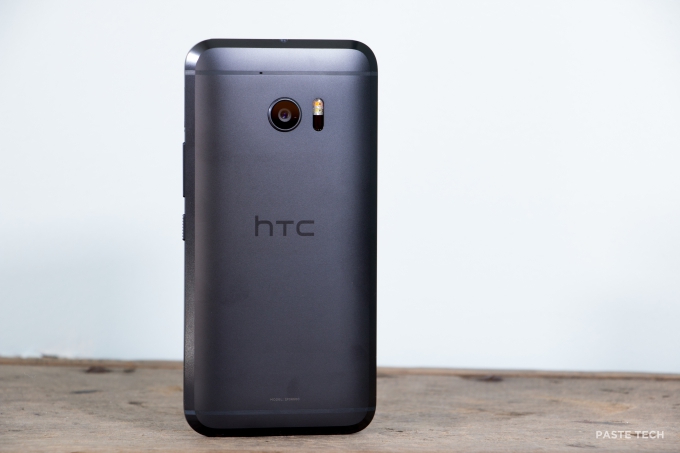 The HTC 10 is unabashedly a smartphone. That might sound strange, but we are suddenly in an era where the smartphone is trying to find new ways to innovate or entice prospective buyers. Smartphones essentially settled into their final form a few years ago and little has changed since then. Samsung has brought curved displays to the mainstream, Apple introduced pressure sensitivity with 3D Touch and LG is trying to start a modular revolution, but for the most part we all know what smartphones are and what they will continue to be. HTC is fine with that. The 10 is a smartphone through and through, no frills or fuss, just a solid machine.
The HTC 10 is unabashedly a smartphone. That might sound strange, but we are suddenly in an era where the smartphone is trying to find new ways to innovate or entice prospective buyers. Smartphones essentially settled into their final form a few years ago and little has changed since then. Samsung has brought curved displays to the mainstream, Apple introduced pressure sensitivity with 3D Touch and LG is trying to start a modular revolution, but for the most part we all know what smartphones are and what they will continue to be. HTC is fine with that. The 10 is a smartphone through and through, no frills or fuss, just a solid machine.






































